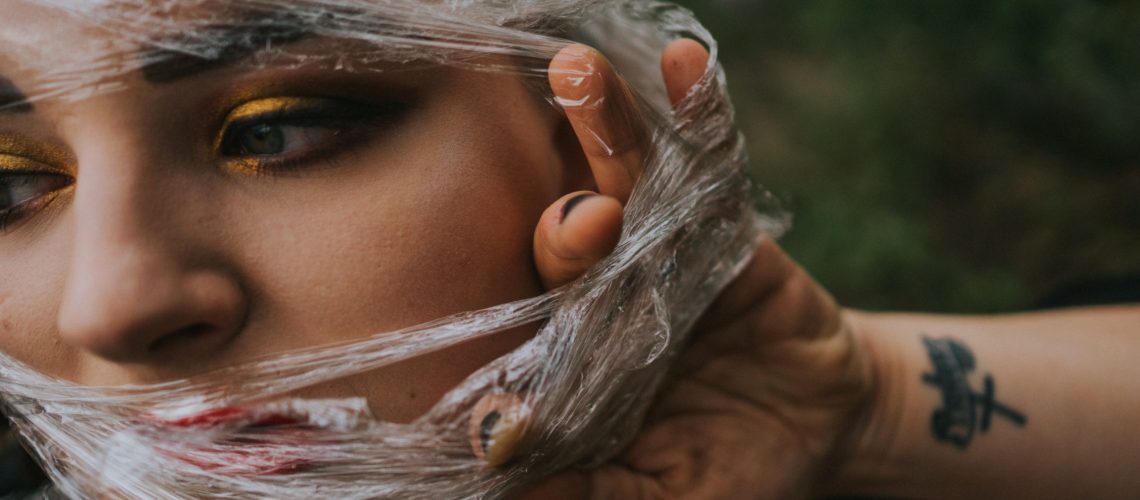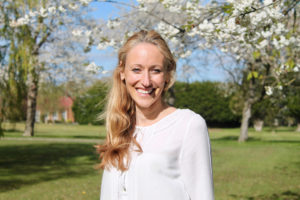
The benefits of ditching harmful foods like sugar, alcohol, and trans fats, and then eating clean, nutritious, whole foods are clear – the fewer toxins, chemicals, and junk you feed your body, the more vibrant you’ll feel.
While the phrase “you are what you eat” is true, your environment also greatly impacts your health. For those of us with Endometriosis, what we put in and let near our body is so very very important, as toxins can cause an array of issues from inflammation, blocking hormone receptors, and growths. Environmental toxins also seriously affect your fertility, they can reduce sperm counts, increase birth defects through causing chromosomal abnormality in developing eggs, infertility and increased rates of cancer.
There are environmental toxins all around us, though many of us are unaware of many of them in our day to day life. If our toxic exposure becomes elevated, our detoxification system can easily become overwhelmed and dysfunctional, which can lead to serious health consequences. Endometriosis sufferers already have challenged livers due to all the excess estrogen, so any further toxins cause a great burden, that often we cannot handle and push our bodies over the edge.
I have identified some of the key culprits below so you can take steps to limit your exposure to these harmful chemicals. The key thing is to stop using hormone / endocrine disruptors such as xenoestrogens (these are substances that mimic the hormone estrogen), which are more reactive than estrogens and cause imbalances in the body, growths and thicker poor quality womb lining. According to Smarr et al. (2016) growing evidence suggests that endocrine-disrupting chemicals (EDCs) may be etiologically involved in the development and severity of Endometriosis.
Xenoestrogens and endocrine-disrupting chemicals (EDCs) are present in household cleaners, personal and feminine care products, food and drinking water. Substances to specifically avoid include: alkylphenol ethoxylates (APEs), parabens, phthalates, perchlorate, styrene, triclosan and antibacterial additives, glycol ethers, dioxins, atrazine and bisphenol A (BPA).

I wanted to share with you 10 ways you can remove toxins from your life – some of these are quick and easy and others more difficult.
- Wash your hands. Particularly before you eat. This is such a simple piece of advice – just make sure not to use fragranced or antibacterial washes. There are so many things we handle in day-to-day life that means we come into contact with hormone-disrupting chemicals and that could then be absorbed by our skin. One surprising one is cash receipts – as they are coated with bisphenol S (BPS) – which is worse than BPA…Just try not to become too paranoid though (I know I did for a while).
- Do not microwave with plastics EVER! Use ceramic or glass and then transfer if you must use plastic (e.g. baby dish). The plastics (particularly BPA) breakdown when heated and they enter you food causing disruption to your endocrine system and are also carcinogenic.
- Swap out your plastic tuppaware for glass. Yes, this might be an initial investment, but plastic ingredients (such as BPA and PVC), slowly leach over time, every time you microwave or dishwasher it, cut it with a knife etc. Glass is heavier but it also preserves food for longer. Use old jam jars, instead of throwing them away – I store all my nuts, seeds, oats, etc in an array of glass jars. They also look nicer!!
- Try to avoid cans. Cans are so convenient, however, they are lined with BPA, which leaches into our food, in particular, tomato products, as these are acidic and can strip the lining of the can. The next best thing is to find BPA free tinned products – but they will still likely to be toxic. A better option is glass – but not always possible for some things and it can be expensive. The best option is to opt for fresh – “Fresh Is Best”, frozen or dried. Over time, start to use dried beans and soak overnight, buy fresh tomatoes and cook them down and freeze in batches.
- Cleaning products. Swap out for greener low toxic versions – there are so many toxic chemicals in your cleaning products – many of them are endocrine disruptors. Particularly avoid ammonia, DEA, APEs, and TEA. Opt for products that have 5 ingredients or less, preferably plant-based (instead of petroleum-based) ingredients that are biodegradable, and avoid anything that has ‘danger’ or ‘corrosive’ on the bottle. You could make your own as another option! A bit of soap, water, baking soda, vinegar, lemon juice and borax – pop in some essential oils… Check out the Environmental Working Group (https://www.ewg.org) to see what your products have in them and how they score.
- Filter Your Water. Not all chemicals that are treated by wastewater facilities can be removed from the water, including hormones from the birth control pill. APE is one chemical example – it is a xenoestrogen and has been shown to affect the reproduction and survival of salmon and other marine life (Ojemaye & Petrik, 2019). Either add a house filter or a cheap solution is to use a filter jug (like Britax) and a shower filter. There are many different types of filters and EWG’s Water Filter Buying Guide provides information that helps to understand what to look for and contaminants they remove. It is very difficult to get rid of hormones and xenoestrogen in water – there are also other nasties such as chlorine. I used to be very poor at this and then finally it clicked and now I used it for everything. Though I must admit – I still need to get the shower head filter.
- Use no-VOCs when painting and decorating. Volatile Organic Compounds and xylene are in many paints and are released for up to 6 months and longer after painting and are endocrine disruptors. When it comes to decorating, look for more natural materials such as woods, natural fabrics such as hemp, linen, bamboo and avoid furniture that has been coated with flame-retardants
- Avoid dry cleaning. Try to buy clothes that do not need to be dry cleaned as there are many chemicals used in the dry cleaning process that are endocrine disruptors.
- Regularly open windows and allow fresh air to flow through. According to the Environmental Protection Agency, US, our homes have 3 to 5 times more pollutants than outside. This is why it is so important to open your windows on a daily basis, even when you have the heating on! This helps to get the air flowing around your house, ensuring any stagnated air and moisture with toxins in it is removed.
- Keep plants in your home. Plants are amazing! They have the ability to produce oxygen, remove carbon dioxide, clean the air and remove toxins. According to NASA’s Clean Air Study, there are several types of general houseplants that are great at doing just that. Five examples are English Ivy, Boston Fern, Mother-in-Law’s Tongue, Spider Plant, Dragon Tree.

I haven’t touched on beauty products – they can be a post on their own – not an easy subject to tackle! I have tried to keep this relatively simple. I could have written a far longer post, and may well write about each of these things individually in the future to give you further depth. Let’s keep it simple for now!
I would love to know what you have done to reduce the toxins in your life. Have you noticed a difference when you have?
References:
How Toxic Are Your Household Cleaning Supplies – this article has some great links to good cleaning supplies.
Smarr MM, Kannan K, Buck Louis GM. Endocrine disrupting chemicals and endometriosis. Fertil Steril. 2016;106(4):959–966. doi:10.1016/j.fertnstert.2016.06.034 Available here.
Ojemaye CY, Petrik L. Occurrences, levels and risk assessment studies of emerging pollutants (pharmaceuticals, perfluoroalkyl and endocrine disrupting compounds) in fish samples from Kalk Bay harbour, South Africa. Environ Pollut. 2019;252(Pt A):562–572. doi:10.1016/j.envpol.2019.05.091 Available here.
Katz TA, Yang Q, Treviño LS, Walker CL, Al-Hendy A. Endocrine-disrupting chemicals and uterine fibroids. Fertil Steril. 2016;106(4):967–977. doi:10.1016/j.fertnstert.2016.08.023 Available here.


